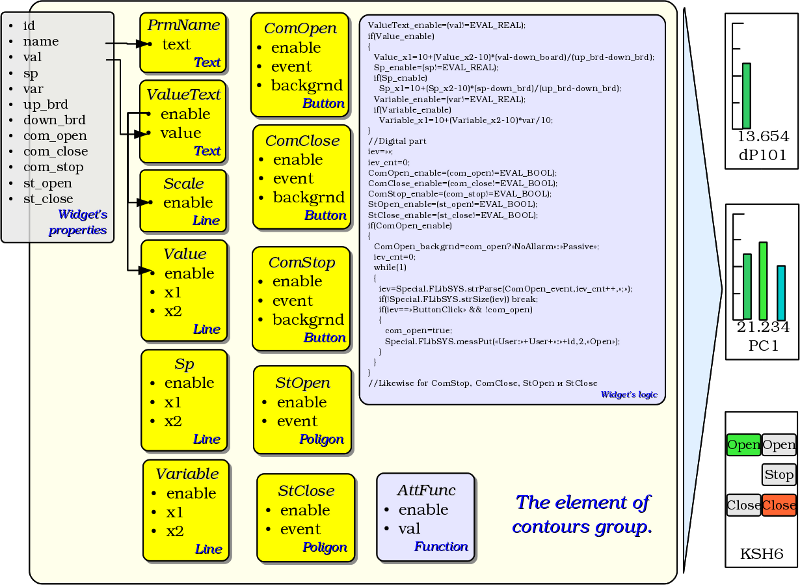Contents of the frame is forming from the elements of visualization (widgets). Widgets may be the basic primitives (different elementary shapes, text, trend, etc.) and derivatives (formed from the basic or other derivatives of widgets). All the widgets are grouped into the libraries. In the process, you can build your own library of derivative widgets.
Actually the frame is also a widget that is used as a final element of visualization. This means that the widget libraries can store the blanks of frames and the templates of the resulting pages of the user interface.
Frames and widgets are passive elements that do not normally contain links to the dynamics and other frames, but only provide information about the properties of the widget and the nature of the dynamics (configuration), connected to the properties of the frame. Activated frames, ie containing links to the dynamics and active connections, form the user interface and are stored in the projects. In some cases, it is possible the direct appointment of the dynamics in the blanks of frames.
Derivative frames/widgets can contain other widgets (attached), which can be glued (associated) with the logic of one another by one of the languages of programming available in the OpenSCADA system.

The widget is an element, by means of which it is provided:
- visualization of operational and archive information about TP;
- alarm about a violation of conduction of TP;
- switching between the frames of TP;
- management of technological equipment and the parameters of conduction of TP.
Tuning and linkage of the widgets is done through their properties. Parent widget and the widgets it contains, can be complemented by user properties. Then the user and static attributes are associated with the properties of embedded widget by internal logic. To show the dynamics (ie, current and archived data), properties of widgets are dynamized, that is linked with the attributes of the parameters of OpenSCADA or properties of other widgets. Using to link of the nested widgets by means of the internal logic with the available programming language of the OpenSCADA system eliminates the question of the implementation of complex logic of visualization, thus providing high flexibility. Practically, you can create fully dynamized frames with complex interactions at the level of the user.